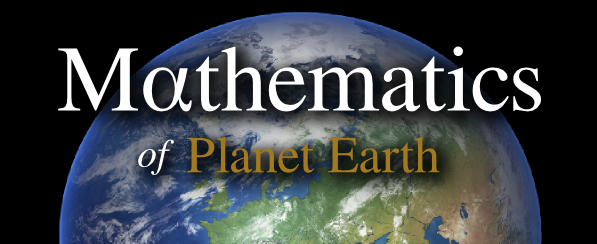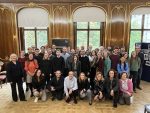MPE Student Rhys Thompson is the lead author on paper “Accounting for Variability in ULF Wave Radial Diffusion Models” published on 20 July 2020 in the Journal of Geophysical Research: Space Physics – AGU Advancing Earth and Space Science.
You can access the full paper here
Authors: R. L. Thompson, C. E. J. Watt, P. D. Williams
Abstract:
Many modern outer radiation belt models simulate the long‐time behavior of high‐energy electrons by solving a three‐dimensional Fokker‐Planck equation for the drift‐ and bounce‐averaged electron phase space density that includes radial, pitch‐angle, and energy diffusion. Radial diffusion is an important process, often characterized by a deterministic diffusion coefficient. One widely used parameterization is based on the median of statistical ultralow frequency (ULF) wave power for a particular geomagnetic index Kp. We perform idealized numerical ensemble experiments on radial diffusion, introducing temporal and spatial variability to the diffusion coefficient through stochastic parameterization, constrained by statistical properties of its underlying observations. Our results demonstrate the sensitivity of radial diffusion over a long time period to the full distribution of the radial diffusion coefficient, highlighting that information is lost when only using median ULF wave power. When temporal variability is included, ensembles exhibit greater diffusion with more rapidly varying diffusion coefficients, larger variance of the diffusion coefficients and for distributions with heavier tails. When we introduce spatial variability, the variance in the set of all ensemble solutions increases with larger spatial scales of variability. Our results demonstrate that the variability of diffusion affects the temporal evolution of phase space density in the outer radiation belt. We discuss the need to identify important temporal and length scales to constrain variability in diffusion models. We suggest that the application of stochastic parameterization techniques in the diffusion equation may allow the inclusion of natural variability and uncertainty in modeling of wave‐particle interactions in the inner magnetosphere.
Plain Language Summary:
The Van Allen outer radiation belt is a region in near‐Earth space containing mostly high‐energy electrons trapped by the Earth’s geomagnetic field. It is a region populated by satellites that are vulnerable to damage from the high‐energy environment. Many modern radiation belt models simulate the behavior of the high‐energy electrons with a diffusion model, which describes how electrons spread out from areas of higher concentration to areas of lower concentration. An important process in these models is radial diffusion, driven by ultralow frequency (ULF) waves, where electrons are drawn from the outer boundary and accelerated toward Earth, or pushed away from the outer radiation belt and lost to interplanetary space. Radial diffusion is generally characterized by a parameter that provides a single output from the specified inputs and does not allow for any variability in the physical process. In this study we present a series of numerical experiments on radial diffusion, which allow for natural variability in both time and space and see how modeling of radial diffusion is impacted. Our results find that better understanding of temporal and spatial variations of ULF wave interactions with electrons, and being able to characterize these variations to a good level of accuracy, is vital to produce a robust description of radial diffusion over long timescales in the outer radiation belt.

Figure
Ensemble results for the electron phase space density (PSD) at the end of a 2 day radial diffusion experiment, where ensemble DLL time series over the duration of the experiment are formulated by applying (lognormal) variability to a constant deterministic DLL (Kp=3) over a range of temporal variability scales (1, 3, 6, 12, and 24 hr, respectively). When variability is applied it persists until to the next hour of variability (relative to the temporal variability scale) where the process is repeated. The median (dashed), mean (dash‐dot) ensemble profiles are shown, as well as the initial PSD profile (dotted) and the deterministic solution with constant deterministic DLL (solid). Ensemble kernel density estimates of the resulting electron PSD are also shown.






